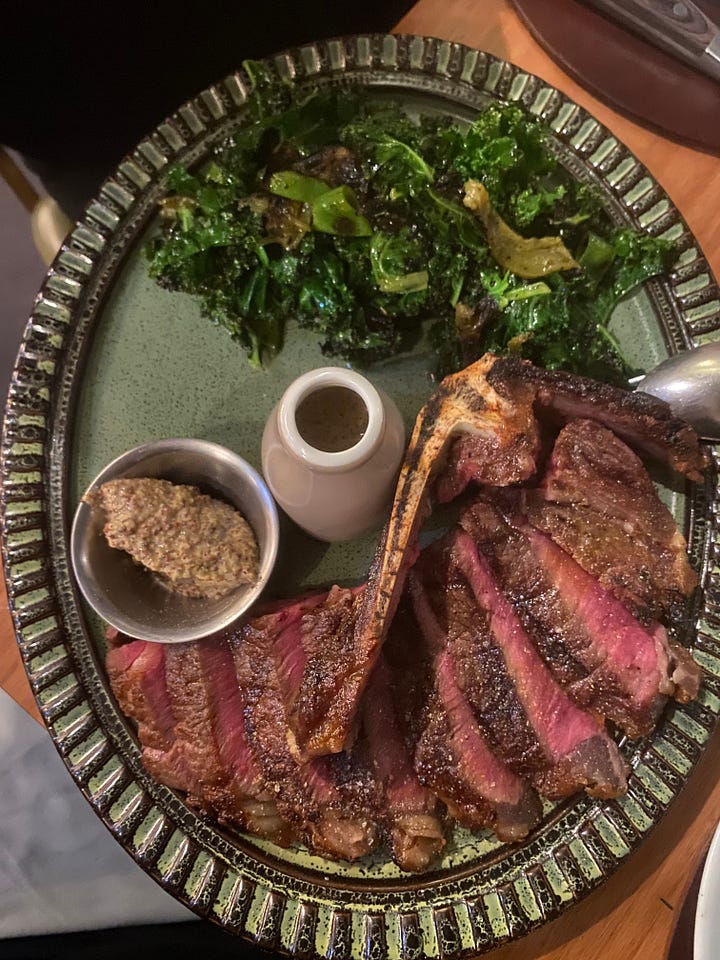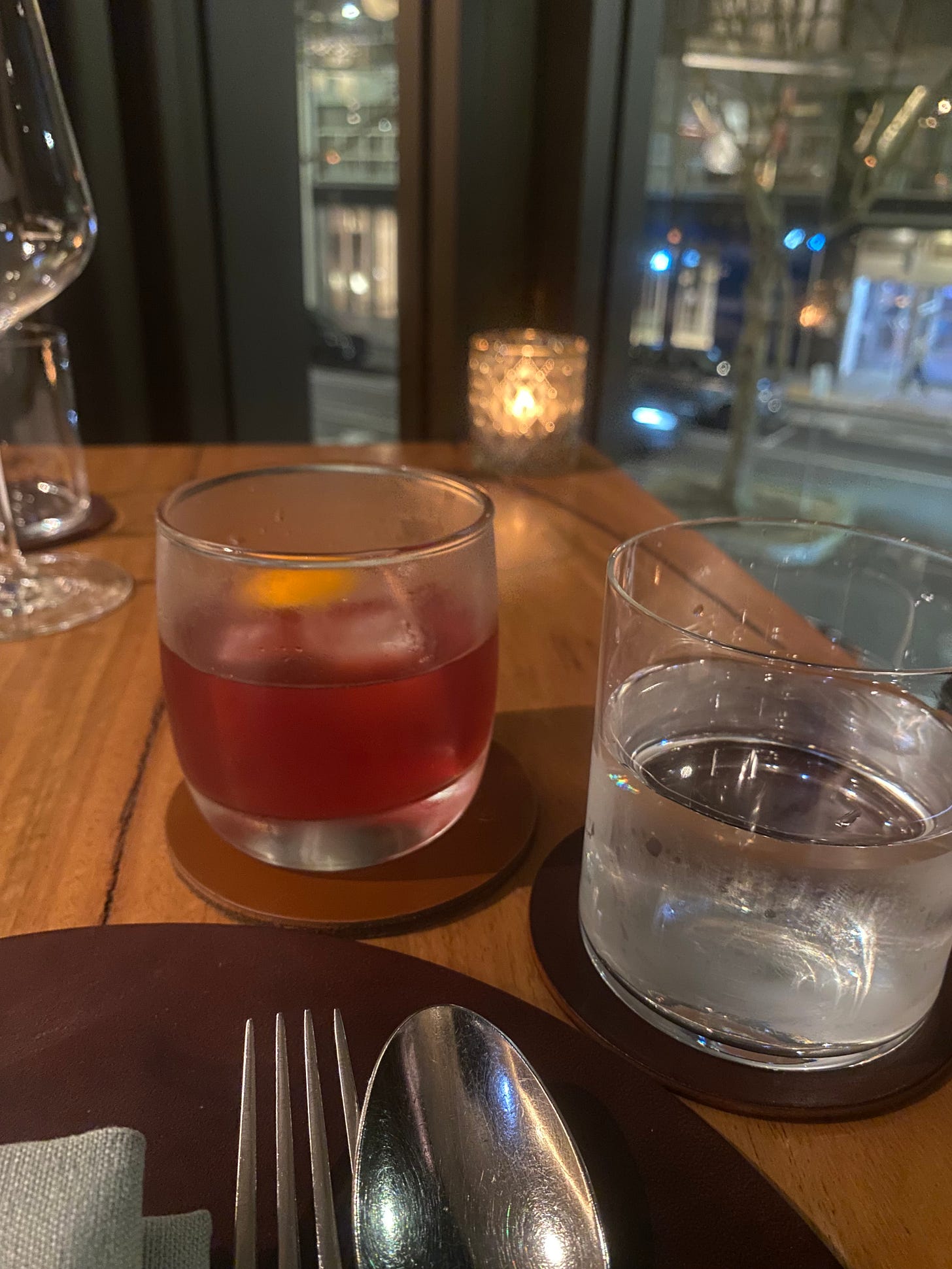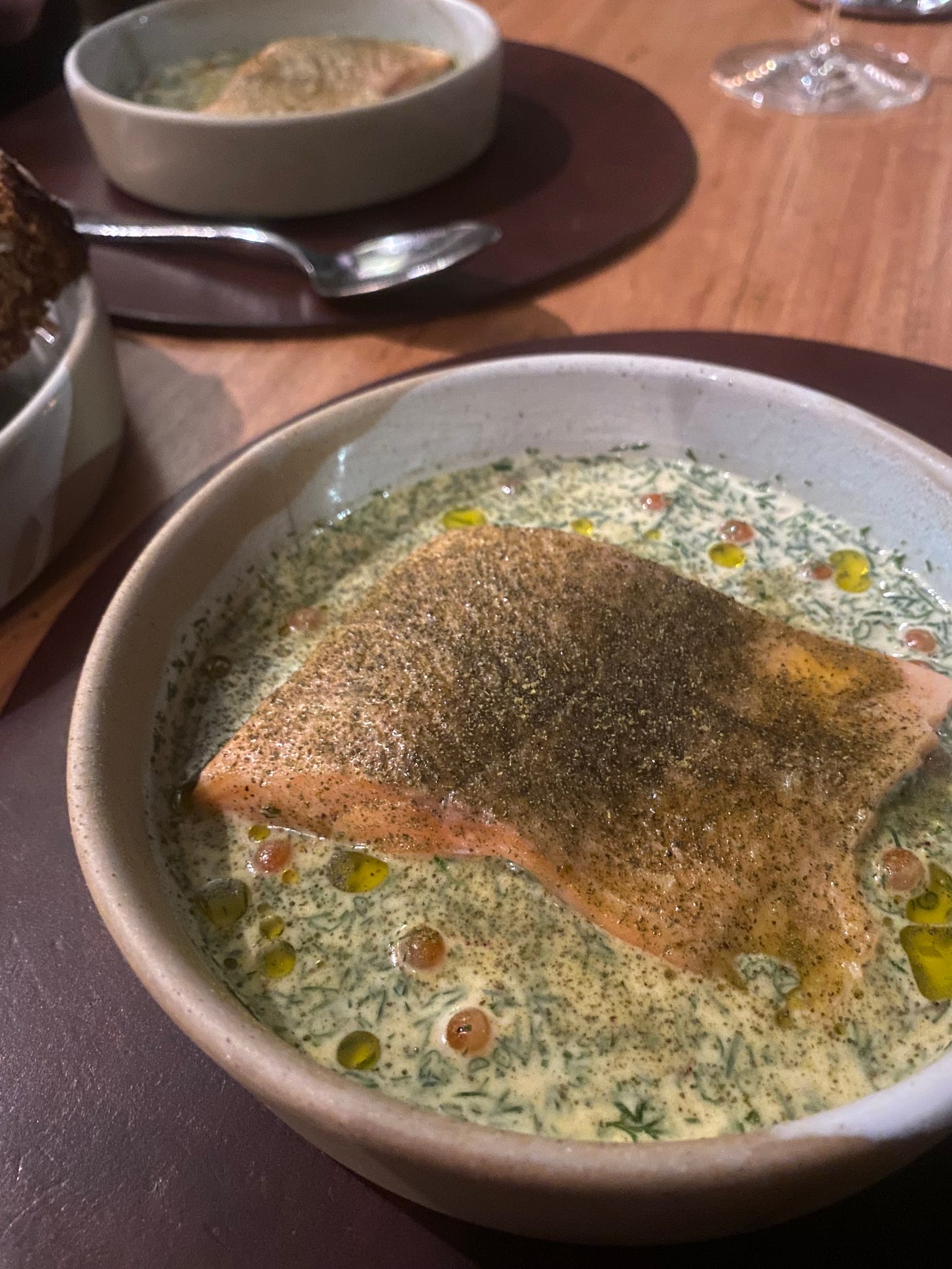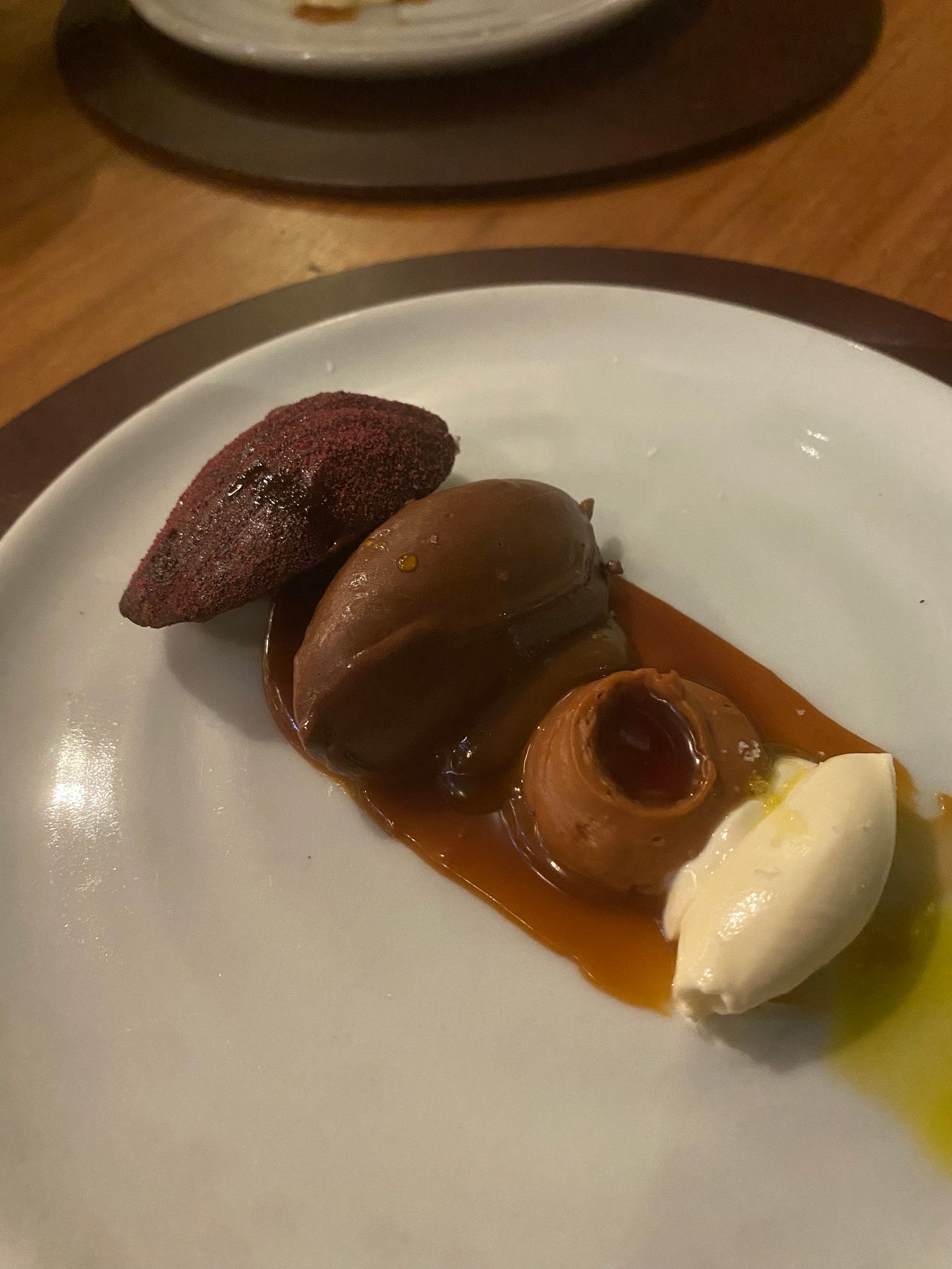Alejandro Saravia’s rise to the status of star celebrity chef has happened largely by stealth. Honing his craft at institutions like Heston Blumenthal’s Fat Duck and Paris’s two MIchelin starred Les Ambassadeurs, Saravia hit the big time down under at the original outpost of his Sydney restaurant, Morena. Closer to home, Melburnians came to be acquainted with Saravia’s Peruvian flavours at his CBD restaurant Pastuso, where pisco sours and ceviche en masse saw Saravia rise to become a mainstay of food media. Rather than any profoundly innovative cuisine or a notable public persona, Saravia has ground out a path to success through graft and consistency.
Still, I was surprised when Saravia took up the co-residency at the blockbuster 80 Collins Street precinct monolith. Sharing a big-budget space with Chris Lucas’s flashy Society and Yakimono, Hinge date ground zero Nick & Nora’s and the premium Next Hotel, I suspected the location might not necessarily fit Saravia’s style. When word filtered through that Saravia had opted for a paired pack and produce-driven concept highlighting the Gippsland region, my concerns deepened. Did Saravia have the profile to launch a three-level mega venue, much less one coming off of a pandemic? Was there any demand for a regional-Victorian themed restaurant in the CBD, from Australia’s most notable Peruvian chef, with a decidedly un-Peruvian concept?
Not unlike Saravia himself, Farmer’s Daughters has gathered its success through consistency and word-of-mouth. This was my first experience at this restaurant, the culmination of what has felt like years of recommendations. The themes were consistent: the cooking is great. It’s comforting. Warm. Classy but relaxed. All things I covet in a restaurant, especially in the grips of this icy Melbourne winter. But the overwhelming aspect of Farmer’s Daughters that constantly came up, and something I can attest to, was the quality of service. From a warm, assuring welcome to the friendly, professional guidance at tableside, FD offered mature, engaged service throughout.
As is somewhat customary with my reviews as of late, the meal starts with a negroni. I’ll especially opt for one when a long meal is ahead, and a medicinal settler is needed to ready the craft for takeoff. This version is an “Australian negroni” made with Applewood Distillery’s Okar bitter aperitif in place of Campari, which is far more herbaceous than its Italian counterpart. We are dining upstairs tonight, on the second of Farmer’s Daughters' three levels. While the first level serves an a la carte option and the rooftop leans snacky, this level is degustation only. As there are no choices to be made, my preference is not to see the menu beforehand, preferring to be surprised as each dish appears.
Gazing around the room, I’m impressed by the cozyness that has been achieved for such a brand new venue. The green leather furnishings and wood finishes on the tables and centrepiece bar are elegant and naturalistic, though the tables are crammed in a little tightly. Stemware, cutlery and tableware are of the highest quality, and the room buzzes with the purposeful flow of service professionals moving with intent.
Our first course is a light introduction to the evening, a mushroom “tartare” served chilled with a stracciatella broth. The fungi is lightly pickled and artfully garnished with an assortment of caviars and purees, all largely drowned out by the stracciatella broth, which is intensely cheesy in a not entirely unpleasant way. Split with a herb oil, this was an enjoyable if unremarkable start, and a testament to the visual skill of the kitchen.
Next, a dish that has become FD’s signature, and one that is apparently the only mainstay on the menu; baked Noojee alpine trout, mountain pepper cream, trout caviar. The trout is cured and then gently finished in the oven, achieving the perfect level of pearlescent doneness. The flesh of the fish is stunning, sweet and silken as only wild caught trout of this calibre can be, but a touch over-salty from the cure. A rich mountain pepper cream sauce is lifted with a generous whack of dill, and the saline kiss of trout roe, but is again on the verge of over-salty. This is a profoundly flavoursome dish, but even as someone whose palate leans salty, I found this dish took it right to the line. But sometimes, that’s where the best experiences lie.
To accompany, Farmer’s Daughters signature soda bread with cultured butter and Tambo Valley honey. Introduced by our server as “basically cake”, they did not undersell the moorishness and sweet density of this bread. It would be difficult for me to overstate just how delicious this bread is; richly spiced and intensified with what I assume is stout and molasses, it lies somewhere between nordic dark rye and gingerbread, savoury and sweet at the same time, served perfectly warm, the interior soft and giving, the crust adding bitterness and chew. I would gladly dine at FD again just to have another crack at this bread.
The fish continued with a nicely pan roasted kingfish, something I don’t believe we see on enough menus (in a cooked state, that is). It has a meaty, flavourful chew when cooked, and this piece was very well cooked indeed. I’m always delighted when a combination of flavours or techniques is presented to me that I hadn’t considered before, and roasted kingfish with mash potato and a sour laksa of clams is certainly one of those. A crunchy tuile broke up the dish texturally but didn’t add much else. I was a fan of this plate of food and is probably indicative of a more adventurous path that FD could pursue should it wish to jump from one hat status to two.


Next, a big old steak. This bone-in porterhouse was nicely cooked, though I suspect it was sous-vide based on the texture of the meat. Accompaniments of mustard and a pepper sauce were pleasant, as was a side of heavily seasoned chargrilled kale, peppers and snow peas, but this felt a little bit thrown together and not entirely coherent with the rest of the menu. The steak had been tremendously aged as well, and while this is a personal preference, I find the vaguely mutton-adjacent stank of overly dry aged meat quite unappetising. A dish like this would probably be a showstopper at a boozy business lunch, but not a great fit in an elongated tasting menu. Please note, this was a supplementary course and costs extra to add to the menu.
More protein as a small and flavourful section of Amber Creek pork neck is served, complemented by various preparations of pumpkin and pear. The pork was heavily smoked and took on the flavour profile of the meaty bacon I remember fondly from my time living in England; not unlike gammon, but utilising superior produce. That the pork retained its medium-rareness was impressive. I appreciated this dish’s commitment to seasonality and skillful sweet/savoury contrast, and it was my favourite of the three red meat dishes. Smart cooking.
To finish, more beef, from what I assume is the same animal as the previous beef dish; this retained the same resonating funk of heavy dry ageing, which was again not to my taste. The beef was not properly trimmed, and the fatty sinew around the edge sprang away from the meat like an elastic band. Otherwise, a fairly forgettable dish; the sauce, utilising beef tongue, was interesting but sparing, and a small Jerusalem artichoke puree and dry onion relish were somewhat afterthoughts. I believe we were the final table on the final sitting of a busy Friday night, so I’m not surprised this dish felt a little rushed, but don’t think it was successful in conception or execution. I’d personally add a fresher vegetable element and some textural crunch to freshen up the eating experience.
The finish was unfortunately not successful either, hailing from a category of dessert that I’m not a fan of: the “empty the prep station” dessert that consists of a bunch of disparate and separate quenelles and dollops. Thickened cream, a nicely made caramel fudge, a chocolate ice cream and a dark chocolate madeleine adorn the plate, for the diner to drag their spoon through. By no means unpleasant, with all the components served correctly, save for the madeleine which was dry, perhaps again owing to us being the last table of the night. The Farmers Daughters degustation menu is $135 per person, and represents quite good value, but this was the only dish where I felt that value wasn’t represented.
Service remains present, helpful and engaged throughout, right down to our server jumping up from his knock-off beer downstairs to open the door for us, shake our hands, and thank us for dining at FD. From top to bottom, Farmers Daughters is a warm and welcoming experience, serving food that toes the line between comfort food and fine dining with skill. Such commitment to regionality and seasonality may occasionally lead to the odd misfire, but I’d gladly return next season for a taste of the best Gippsland has to offer. Just don’t take that soda bread off the menu.












